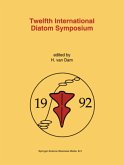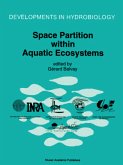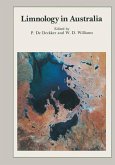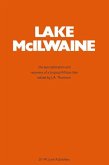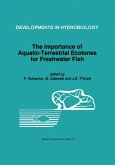Twelfth International Diatom Symposium
Proceedings of the Twelfth International Diatom Symposium, Renesse, The Netherlands, 30 August ¿ 5 September 1992
Herausgegeben:Dam, Herman van
Twelfth International Diatom Symposium
Proceedings of the Twelfth International Diatom Symposium, Renesse, The Netherlands, 30 August ¿ 5 September 1992
Herausgegeben:Dam, Herman van
- Gebundenes Buch
- Merkliste
- Auf die Merkliste
- Bewerten Bewerten
- Teilen
- Produkt teilen
- Produkterinnerung
- Produkterinnerung
The Twelfth International Diatom Symposium stressed how diatoms can be used to assess the human impact on natural waters, without neglecting other important fields of research. As the frustules of many diatom species are relatively resistant to dissolution they are preserved in freshwater and marine sediments and provide a record of past environments on earth. In past decades they have been successfully used to reconstruct changes in water bodies evoked by changes in salinity, acidification and eutrophication. In the last few years diatom-inferred predictions of environmental variables have…mehr
![Twelfth International Diatom Symposium Twelfth International Diatom Symposium]() Twelfth International Diatom Symposium231,99 €
Twelfth International Diatom Symposium231,99 €![Space Partition within Aquatic Ecosystems Space Partition within Aquatic Ecosystems]() Space Partition within Aquatic Ecosystems39,99 €
Space Partition within Aquatic Ecosystems39,99 €![Limnology in Australia Limnology in Australia]() P. de DeckkerLimnology in Australia77,99 €
P. de DeckkerLimnology in Australia77,99 €![Lake Mcilwaine Lake Mcilwaine]() Lake Mcilwaine39,99 €
Lake Mcilwaine39,99 €![Lake McIlwaine Lake McIlwaine]() J.A. Thornton (ed.)Lake McIlwaine150,99 €
J.A. Thornton (ed.)Lake McIlwaine150,99 €![The Importance of Aquatic-Terrestrial Ecotones for Freshwater Fish The Importance of Aquatic-Terrestrial Ecotones for Freshwater Fish]() F. Schiemer / M. Zalewski / J.E. Thorpe (eds.)The Importance of Aquatic-Terrestrial Ecotones for Freshwater Fish232,99 €
F. Schiemer / M. Zalewski / J.E. Thorpe (eds.)The Importance of Aquatic-Terrestrial Ecotones for Freshwater Fish232,99 €![Eleventh International Seaweed Symposium Eleventh International Seaweed Symposium]() BirdEleventh International Seaweed Symposium233,99 €
BirdEleventh International Seaweed Symposium233,99 €-
-
-
As the frustules of many diatom species are relatively resistant to dissolution they are preserved in freshwater and marine sediments and provide a record of past environments on earth. In past decades they have been successfully used to reconstruct changes in water bodies evoked by changes in salinity, acidification and eutrophication. In the last few years diatom-inferred predictions of environmental variables have become much more quantitative.
In the most recent research reports the strong separation between palaeolimnological and neolimnological diatom research is fading, as palaeolimnologists are increasingly using modern calibration sets to infer past states of the environment. This quantitative approach is also very suitable for prediction of future changes in the biota of surface waters. Also ecological changes due to climatic modification have been investigated more thoroughly recently. A very important new research topic is the occurrence of toxic diatoms, particularly along the coasts of North America. These proceedings are intended to be a balanced view of such modern developments in diatom research. They should also be of interest to non-specialists in diatoms, who can use the results of diatom research as a tool in a more general taxonomic, ecological and geological context.
- Produktdetails
- Developments in Hydrobiology 90
- Verlag: Springer / Springer Netherlands
- Artikelnr. des Verlages: 978-0-7923-2484-3
- Repr. 1993
- Seitenzahl: 552
- Erscheinungstermin: 31. Dezember 1993
- Englisch
- Abmessung: 266mm x 200mm x 34mm
- Gewicht: 1365g
- ISBN-13: 9780792324843
- ISBN-10: 0792324846
- Artikelnr.: 22924401
- Developments in Hydrobiology 90
- Verlag: Springer / Springer Netherlands
- Artikelnr. des Verlages: 978-0-7923-2484-3
- Repr. 1993
- Seitenzahl: 552
- Erscheinungstermin: 31. Dezember 1993
- Englisch
- Abmessung: 266mm x 200mm x 34mm
- Gewicht: 1365g
- ISBN-13: 9780792324843
- ISBN-10: 0792324846
- Artikelnr.: 22924401


